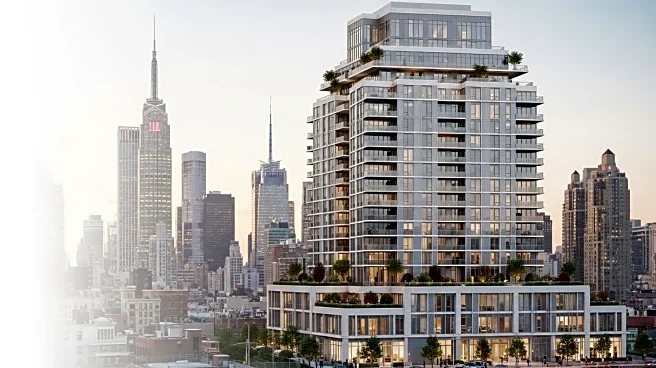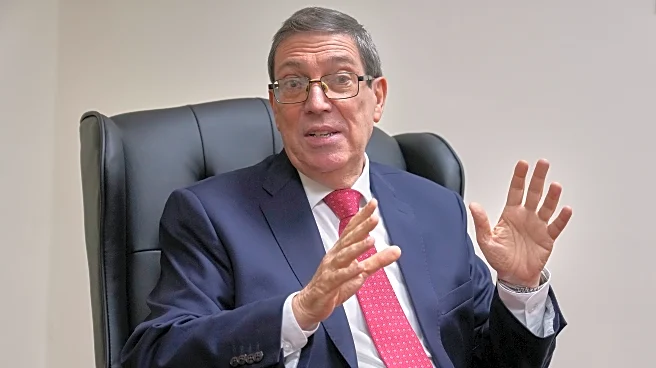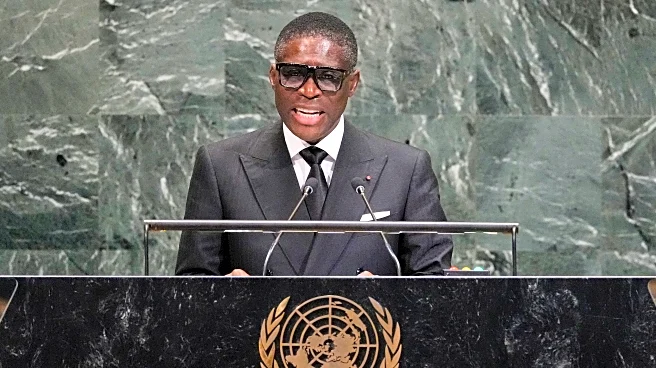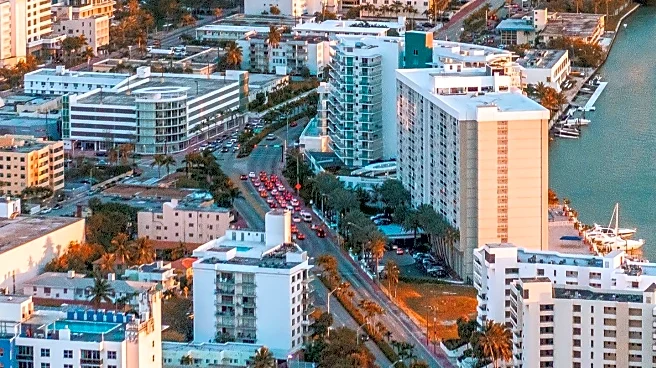What's Happening?
Miami has been identified as the city most likely to experience a housing market bubble burst, according to a study by UBS Global Wealth Management. The report highlights that Miami's home prices have soared over the past 15 years, potentially leading to a sharp decline. A housing bubble occurs when home prices rise significantly beyond their actual values, often driven by investor speculation and increased buyer demand. The study notes that Miami's housing market shows the highest bubble risk among cities analyzed, including Tokyo, Zurich, and Los Angeles. The warning comes after a summer where Miami homeowners began delisting properties at a rate more than twice the national average, with homes lingering unsold for longer periods. The UBS index measures the likelihood of housing markets being in bubble territory, indicating potential risks but not predicting exact timing for price drops.
Why It's Important?
The potential burst of Miami's housing bubble could have significant implications for the local economy and real estate market. A dramatic drop in home prices may affect homeowners, investors, and the broader financial sector. Miami's housing market has been a strong driver of economic growth, attracting newcomers due to its coastal appeal and favorable tax environment. However, the risk of a bubble burst could lead to decreased property values, impacting wealth and investment portfolios. The study suggests that while price growth may turn negative, a sharp correction is unlikely due to continued demand from domestic and international buyers, particularly in the luxury segment.
What's Next?
The study indicates that while Miami's housing market faces high bubble risk, a sharp correction is not imminent. Factors such as Miami's coastal appeal, favorable tax environment, and robust international demand, especially from Latin America, may continue to support the market. However, changes in the economy, investor confidence, or an increase in housing supply could trigger a decline in home values. Stakeholders, including real estate professionals and policymakers, will need to monitor market conditions closely to mitigate potential impacts.
Beyond the Headlines
The situation in Miami reflects broader trends in the U.S. housing market, where affordability issues and speculative investments have raised concerns about sustainability. The price-to-rent ratio in Miami has surpassed levels seen during the 2006 property bubble, highlighting potential risks. The study underscores the importance of understanding market dynamics and the interplay between home prices and rental costs, which can influence decisions on buying versus renting.











